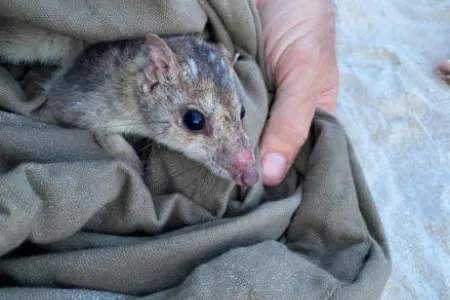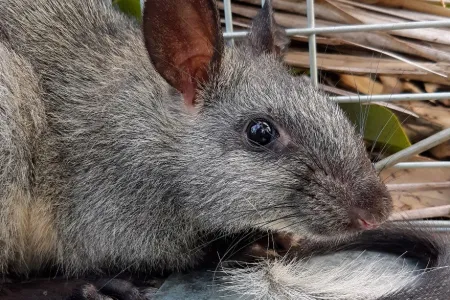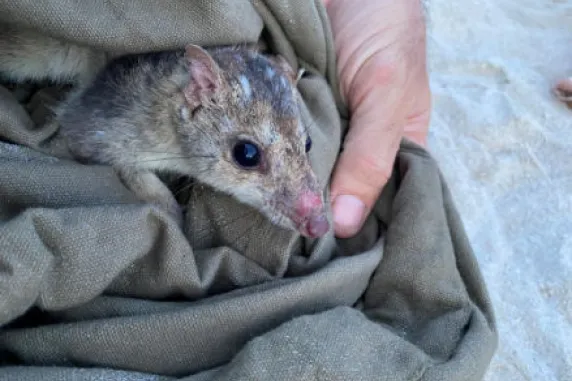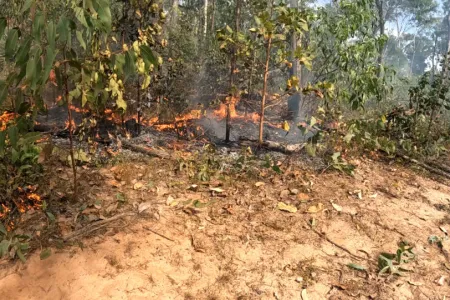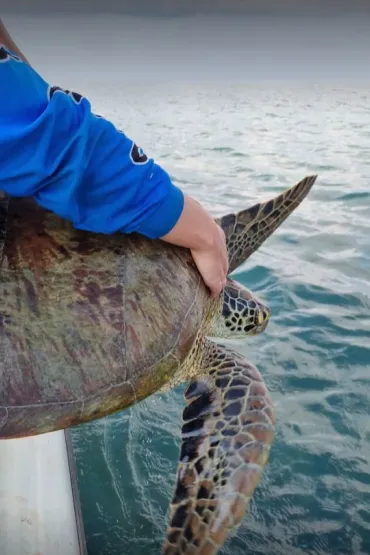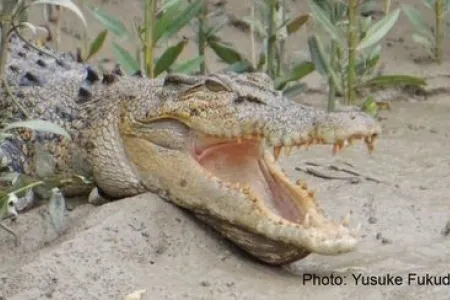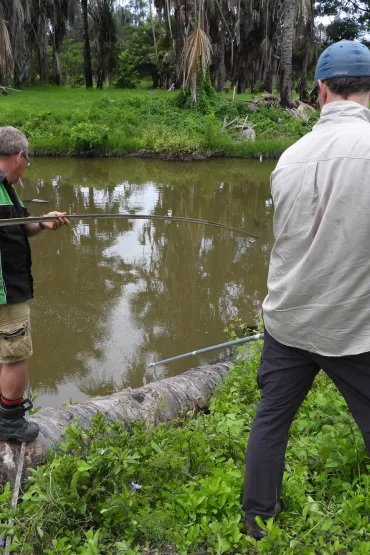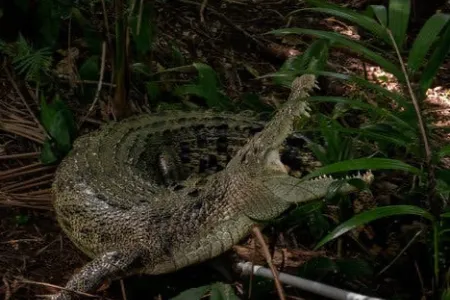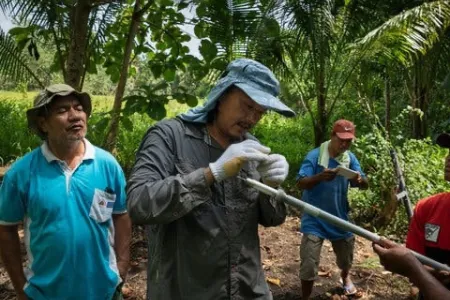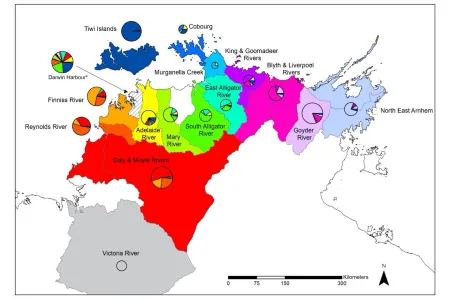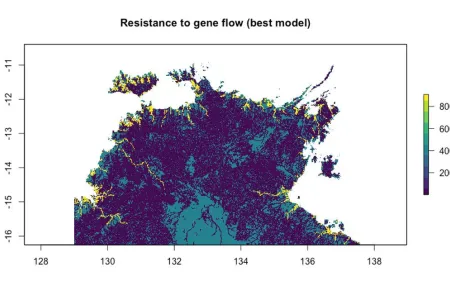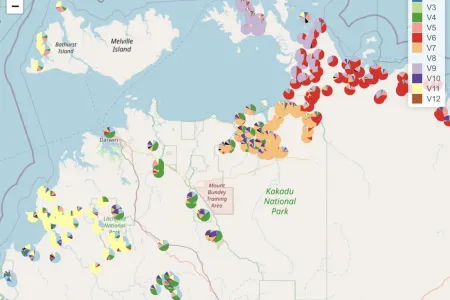Our focus
We study biodiversity in northern Australia and the broader region, applying research approaches in genomics and ecology to better understand and conserve the distinctive wildlife of northern Australia and the broader region.
We work on species from native mammals (bilbies, possums, antechinus, quolls, bandicoots, tree rats and more) to crocodiles, sharks and turtles.
A strong research interest is in the application of molecular, field and computation ecology to questions in applied conservation biology and the development of capacity for genetic tools in environmental research in northern Australia.
Major current and recent projects include:
- Understanding biodiversity on northern Australian islands. This is an ARC Discovery-funded project with the Northern Land Council, Tiwi Resources, Larrakia Nation and Northern Territory Government to work with community-based ranger groups to assess the conservation values and priorities for NT’s offshore islands.
- The Macroderma Initiative: an ARC Linkage funded project with Western Sydney University, The University of Adelaide, Agnico Eagle Mining, Parks Australia and other industry, government, research and NGO partners to develop new methods for ghost bat research to improve regional conservation planning.
- Conservation genomics of threatened mammals across Northern Australia
- ARC-funded research on the application of landscape genetics to study mammal population dynamics in fire-prone landscapes on the Tiwi Islands
- ARC-funded work with Larrakia Nation, Kakadu National Park, NT Parks and Wildlife, Gumurr-Marthakal Rangers and many others on seascape genetics and movement ecology of turtles and coastal dolphins to inform monitoring and conservation planning
- Combining drone-based monitoring with landscape genomics to better understand the distribution and population connectivity of feral pigs for informing management and potential pathogen spread modelling
- ARC Linkage-funded research with Environs Kimberley to evaluate biodiversity outcomes of fire management
Specialist expertise and tech
- Newly-established laboratory for generating population genomics data.
- Trace DNA facilities and equipment.
- Vertebrate tissue/DNA sample archive from extensive fieldwork across northern Australia.
- Expertise in empirical and simulation-based research in landscape genetics and population ecology of vertebrates.
- Strong collaborative links with other research institutions and environmental management stakeholder groups.
Meet the team
Our group includes, among other contributors:
Former staff and students
(many of whom were co-supervised with other lead supervisors)
- Brenton von Takach Dukai (PhD, Postdoc)
- Ian Davies (Research Fellow)
- Natalie Robson (PhD)
- Alex Carey (PhD)
- Hayley Geyle (PhD)
- Yusuke Fukuda (PhD - ANU)
- Mara Muller (PhD)
- Amy Kirke (PhD)
- Bryn Pickering (Honours)
- Ewan Nichol (Honours)
- Erica Smith (Honours)
- Brittany Brockett (PhD - ANU)
- Georgeanna Story (PhD - ANU)
- Janine Erica Abecia (PhD)
- Shandala Loving (PhD)
- Kyle Tyler (PhD)
- Allyson Malpartida (Masters)
- Brien Roberts (PhD)
- Elle Bowd (PhD – ANU)
- Robyn Shaw (PhD – ANU)
- Michaela Blyton (PhD – ANU)
- Kelly Dixon (PhD – ANU)
- Felicia Pereoglou (PhD – ANU)
- Maldwyn Evans (PhD – ANU)
- Laurence Berry (PhD – ANU)
- Joe Salmona (Masters – ANU)
- Yuzun Guo (Masters – ANU)
- Kristen Abicair (Honours – ANU)
Why this research is important
The group provides scientific information for better management and conservation of wildlife. This includes new tools for more efficient and informative monitoring of biodiversity, scientific information enabling better fire management for biodiversity and population management and conservation of iconic species like saltwater crocodiles.
Current projects
Conservation genomics of threatened mammals in Northern Australia
Northern Australia is a focus of contemporary biodiversity loss, with small mammal populations declining steeply in recent decades and many species becoming extinct over large areas of their former range. These declines have features reductions in abundance of formerly common species, contractions in their geographic distributions and the range of environmental conditions in which they are found (realised niche). A major research program in our group has focussed on whether declining mammals in the region are beginning to suffer from losses of genomic diversity which may act as a secondary threatening process by constraining capacity for environmental adaptation and persistence. Genetic diversity is increasingly recognised as a key component of biodiversity and targets for conserving genetic diversity are important for long-term conservation outcomes.
At CDU, this work has been led by a number of researchers including Sam Banks, Brenton von Takach Dukai (now Curtin University), Teigan Cremona, Holly Sargent and Ewan Nicholl. We work with the Northern Territory and WA Governments and NGOs like the Australian Wildlife Conservancy on this research program, which has been funded by the Oz mammals Genomes Initative (BioPlatforms Australia).
We have published research on species including the northern quoll, brush-tailed rabbit-rat and black-footed tree-rat.
Recent papers from this project:
von Takach, B., Sargent, H., Penton, C.E. et al. Population genomics and conservation management of the threatened black-footed tree-rat (Mesembriomys gouldii) in northern Australia. Heredity (2023). https://doi.org/10.1038/s41437-023-00601-0
von Takach, B., Ranjard, L., Burridge, C. P., Cameron, S. F., Cremona, T., Eldridge, M. D. B., Fisher, D. O., Frankenberg, S., Hill, B. M., Hohnen, R., Jolly, C. J., Kelly, E., MacDonald, A. J., Moussalli, A., Ottewell, K., Phillips, B. L., Radford, I. J., Spencer, P. B. S., Trewella, G. J. … Banks, S. C. (2022). Population genomics of a predatory mammal reveals patterns of decline and impacts of exposure to toxic toads. Molecular Ecology, 31, 5468– 5486. https://doi.org/10.1111/mec.16680
von Takach, B., Penton, C.E., Murphy, B.P. et al. Population genomics and conservation management of a declining tropical rodent. Heredity 126, 763–775 (2021). https://doi.org/10.1038/s41437-021-00418-9
von Takach, B, Scheele, BC, Moore, H, Murphy, BP, Banks, SC. Patterns of niche contraction identify vital refuge areas for declining mammals. Divers Distrib. 2020; 26: 1467– 1482. https://doi.org/10.1111/ddi.13145
The social and spatial ecology of the ghost bat: Filling the knowledge gaps to facilitate accurate assessment of mining impacts on ghost bats
Ghost bats (Macroderma gigas) and mining are often interlinked in the Northern Territory due to the propensity of ghost bats to inhabit historical mine adits. Reworking of these adits and surrounding areas has the potential to displace ghost bat colonies and impact population numbers. It is currently difficult to quantify this impact as little is known about ghost bat population size and distribution, movement across the landscape, the behaviour of bats after disturbance/exclusion and the identification of ‘important’ roost sites. The potential impact and the uncertainty around this impact have major consequences for environmental approvals for new mining activities.
Dr Nicola Hanrahan is leading a project funded by Agnico Eagle Mining to provide new information on the ecology of the ghost bat in the Northern Territory. The broad aims from a practical perspective are to evaluate the outcomes of a set of innovative environmental mitigation actions relating to mining development and contribute to ‘de-risking’ future mining proposals by enabling well-informed assessment of potential impacts on ghost bat populations, and contribute to improved outcomes and community engagement with ghost bat conservation in the Pine Creek area.
Can animal dispersal inform fire management for species conservation?
This project aims to improve fire management for environmental outcomes in northern Australia. It will address a key knowledge gap in our understanding of the effects of fire on biodiversity, relating to the spatial pattern of fire in the landscape. This is important because changing patterns of fire are not only a risk to humans but have major effects on our environment. The research draws on field-based ecological research, genetic data and new computer simulation models to develop a process-based understanding of how threatened mammals in northern Australia respond to fire events and what are the consequences of different spatial patterns of fire management for population persistence and genetic diversity.
This ARC-funded project is a collaboration between CDU (Sam Banks, Teigan Cremona, Hugh Davies, Ian Davies, Brett Murphy, Alex Carey, Georgina Neave), ANU (Geoff Cary, Ian Davies), Graeme Gillespie (NSW Government) and the Tiwi Land Rangers. The key benefits include new knowledge and tools to better manage fire and address one of our major environmental challenges, the decline of native mammals in northern Australia.
This is a relatively new project but relevant papers from this long-term research program (fire, genetics and demography of threatened species) include:
Shaw, RE, James, AI, Tuft, K, et al. Unburnt habitat patches are critical for survival and in situ population recovery in a small mammal after fire. J Appl Ecol. 2021; 58: 1325– 1335. https://doi.org/10.1111/1365-2664.13846
Banks, SC, Davies, ID, Cary, GJ. When can refuges mediate the genetic effects of fire regimes? A simulation study of the effects of topography and weather on neutral and adaptive genetic diversity in fire-prone landscapes. Mol Ecol. 2017; 26: 4935– 4954. https://doi.org/10.1111/mec.14250
Davies, I.D., Cary, G.J., Landguth, E.L., Lindenmayer, D.B. and Banks, S.C. (2016), Implications of recurrent disturbance for genetic diversity. Ecol Evol, 6: 1181-1196. https://doi.org/10.1002/ece3.1948
Collaborative science for monitoring of Northern Territory marine megafauna
The project’s aim is to map population connectivity and critical habitat for coastal marine megafauna in remote northern Australian waters, providing a more informed scientific base for biodiversity monitoring and management. The project will employ cutting edge methods in genetics and movement ecology and unite First Nations sea rangers with marine national park managers and scientists.
This ARC-funded project is a partnership among universities (CDU, Macquarie University, James Cook University, Edith Cowan University), the Australian Institute of Marine Science, Parks Australia (Kakadu National Park), the Taronga Conservation Society, NT Parks and Wildlife, Larrakia Nation Aboriginal Corporation (Larrakia Rangers) and the Marthakal Homelands and Resource Centre (Gumurr Marthakal Rangers). CDU staff leading this project include Carol Palmer and Sam Banks, with Natalie Robson working on the project for her PhD.
In conjunction with the ARC Linkage project, the Larrakia Rangers lead a program funded by the Inpex Coastal Offsets Scheme for sea ranger exchanges and environmental monitoring, bringing other groups including the Kenbi Rangers, Tiwi Sea Rangers and Mardbalk Rangers into the collaborative program.
Expected outcomes include enhanced capacity for monitoring and conservation planning and new partnerships that will improve research capacity in remote environments. Benefits include environmental management led by local rangers and Traditional Owners, and conservation benefits to coastal dolphin and sea turtle species. (Palmer, Martien et al. 2023)
Palmer, C., K. K. Martien, H. Raudino, K. M. Robertson, A. Withers, E. Withers, R. Risk, D. Cooper, E. D’Cruz, E. Jungine, D. Barrow, N. Cuff, A. Lane, D. Keynes, K. Waples, A. Malpartida and S. Banks (2023). "Evidence of resident coastal population(s) of false killer whales (Pseudorca crassidens) in northern Australian waters." Frontiers in Marine Science 9. https://doi.org/10.3389/fmars.2022.1067660
Tracking movement of the saltwater crocodile with DNA
Yusuke Fukuda is leading a project as a CDU adjunct researcher and Northern Territory Government scientist to use DNA to track movements of saltwater crocodiles through northern Australia and Oceania. So far, his work has identified patterns of crocodile movement around the Top End and, with more samples this year, will be important for improving crocodile conservation and management for human safety and economic outcomes. Recently, we conducted sampling in Timor Leste so we can understand sources of recruitment underpinning an apparent increase in crocodile abundance and attacks in Australia's nearest neighbour.
This is a collaborative project with ANU (Craig Moritz), Griffith University (Nancy Fitzsimmons), NT Government, WA Government, Qld Government, Wildlife Management International (Grahame Webb) and many Australian and international collaborators.
Some publications from this project include:
Fukuda, Y., Moritz, C., Jang, N., Webb, G., Campbell, H., Christian, K., Lindner, G., & Banks, S. (2022). Environmental resistance and habitat quality influence dispersal of the saltwater crocodile. Molecular Ecology, 31, 1076– 1092. https://doi.org/10.1111/mec.16310
Fukuda Y, Webb G, Manolis C, Lindner G, Banks S (2019) Translocation, genetic structure and homing ability confirm geographic barriers disrupt saltwater crocodile movement and dispersal. PLoS ONE 14(8): e0205862. https://doi.org/10.1371/journal.pone.0205862
Enhancing surveillance of the northern Australian feral pig population for African swine fever and other high impact pests and diseases
The goal of this project was to take a science-based approach to feral pig surveillance in the context of enhancing preparedness for and early detection of African Swine Fever and other novel diseases in Northern Australian landscapes. The project developed in collaboration with CDU (Hamish Campbell, Sam Banks and Mariana Campbell) and the North Australia Quarantine Strategy (Skye Fruean and Guy Weerasinghe) and extended to include collaborators from NT Government, Qld Government, WA Government and a number of NGOs. We specifically trialled the application of two modern techniques, genomic sequencing and aerial thermal imagery to assess their efficiency and effectiveness for enhancing feral pig surveillance.
Key outcomes from this research include:
- A blueprint upon how to create and sustain a network of partners who will freely provide feral pig tissue samples.
- A network of partner organisations across northern Australia from which feral pig tissue can be collected into the future.
- A large panel of informative SNP genetic markers mapped to the pig reference genome, customised for the Australian feral pig population based on samples from northern, southern, eastern and western Australia.
- An extensive feral pig genetic database for northern Australia, illustrating the spatial extent of feral pig meta-populations and locations of population discontinuities.
- Regional maps of modelled patterns of feral pig movement across the landscape, featuring predicted areas of high and low feral pig movement.
The research program is continuing to develop a national map of distribution and population connectivity of feral pigs to better understand movement patterns.
